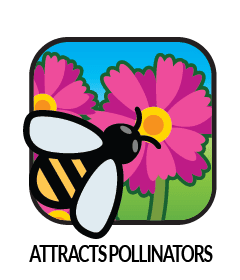Arrowwood Viburnum
Plant Type: Dormant, bare-root
Zones: 3-8
Soil Type: Clay, Loamy & Sandy Soils
Site Selection: Full Sun, Partial Sun
Mature Height & Width: 6-12' Height and 6-12' Spread
Growth Rate: Moderate - 12-24" per year once established
Moisture Requirements: Average to wet soils






Arrowwood Viburnum
Viburnum dentatum
The Arrowwood Viburnum is a very versatile shrub that will grow in a variety of soil types and mositure levels. This ornamental shrub produces shiny green leaves that turn a deep reddish-purple color in the fall. Adorned with 2-4" creamy white clusters of flowers in May and early June, this shrub also produces a blue colored berry in the fall that a wide variety of birds and wildlife love. While the Arrowwood Viburnum will grow in your upland areas, it will also do well on the wetter spots of your land. A great addition to your property by any measure!
If you intend to prune this shrub, prune it shortly after it flowers as it develops the flower buds for next season during the summer.
The Arrowwood Viburnum is a must for any wildlife enthusiast. This ornamental shrub has a nice shape, beautiful flowers, berries that wildlife flock to and great fall color. What's not to love?
Fun Fact: The Arrowwood Viburnum gets its name from the Native Americans who once used its strong basal stems to form the shafts of their arrows.
Common uses for the Ninebark include:
- Naturalizing upland areas or former fields
- Planting along the edges of woodlands and in wetland areas
- Erosion control along streams, creeks and rivers
- Lower story of a windbreak
- Attracts many types of wildlife who consume its blue colored berries
- Provides shelter and nesting sites for birds and small animals
In the spring, the flowers on the Arrowwood Viburnum attract pollinators such as bees and butterflies. In fact, this shrub is one of the few hosting plants for the beautiful blue Spring Azure Butterfly and the Hummingbird Moth.
The dense habit of the Arrowwood Viburnum provides excellent nesting sites for birds and important cover for both birds and small mammals. The berries produced by the Arrowwood Viburnum are eaten by songbirds such as cardinals and thrushes and game birds like grouse and wild turkeys. Deer, rabbits and mice eat the berries as well. Beavers have been known to browse on the leaves of the Arrowwood Viburnum. If you are a wildlife enthusiast, you need the Arrowwood Viburnum in your mix.
Product Questions
To properly prune arrowwood viburnum, you should prune broken, damaged and old growth to the base of the plant with a pair of sharp pruning shears or loppers while trimming younger branches with hand pruners to a desired shape. To remove the suckers, cut and/or mow the each time they appear. Make sure not to cut down more than 1/3 of the plant when pruning.





